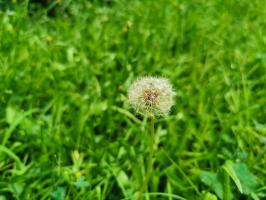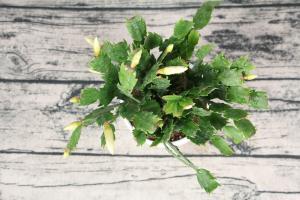Introduction
If you own a rubber tree plant, it is important to know how to take proper care of it to ensure its growth and health. One of the first steps towards this is to identify and understand the basic characteristics of your rubber tree plant. In this article, we will guide you on how to know your rubber tree plant for optimum plant care.
Leaf Characteristics
The first thing to observe is the leaf characteristics of your rubber tree plant. The leaves are typically dark green and have a glossy texture. The shape of the leaves is oblong with a pointed tip and they range in size from 6 to 10 inches long. The plant has alternate leaves, which means that leaves grow at alternating positions on the stem. The leaves are attached to the stem by a petiole, which connects the stem and the blade of the leaf.
Stem Characteristics
The stem of the rubber tree plant plays a vital role in the plant's growth and reproduction. The stem of the plant can grow up to 100 feet tall in the wild, but is typically smaller in cultivated settings. The stem has a smooth and shiny bark with fissures that deepen as the plant matures. The tip of the stem has a prominent growth point that helps to produce new leaves and branches. Younger stems are green, while older stems turn brown or grey with age.
Root Characteristics
The root system of the rubber tree plant is extensive and can grow up to three times the diameter of the plant canopy. The roots are thick and fleshy, and they help to anchor the plant in its soil or pot. The roots also help to absorb nutrients and water from the soil, which are essential for growth and survival. Over time, the roots can outgrow their container and may require repotting.
Flower and Fruit Characteristics
The rubber tree plant produces flowers, although they are not often seen in cultivation because they are small and grow on the upper branches of the tree. The flowers are borne in clusters and are typically green or yellow in color. After pollination, the flowers develop into oval-shaped fruits that are green when immature and turn bright red when ripe. The fruit contains seeds that can be used to propagate new rubber tree plants.
Conclusion
Knowing the basic characteristics of your rubber tree plant is an essential step towards providing proper care for your plant. By identifying the leaf, stem, root, and flower/fruit characteristics of your plant, you can create an optimal environment for your plant to thrive. Remember to provide adequate light, water, and nutrients to your rubber tree plant to keep it healthy and strong.

 how many times do yo...
how many times do yo... how many planted tre...
how many planted tre... how many pine trees ...
how many pine trees ... how many pecan trees...
how many pecan trees... how many plants comp...
how many plants comp... how many plants can ...
how many plants can ... how many plants and ...
how many plants and ... how many pepper plan...
how many pepper plan...
































